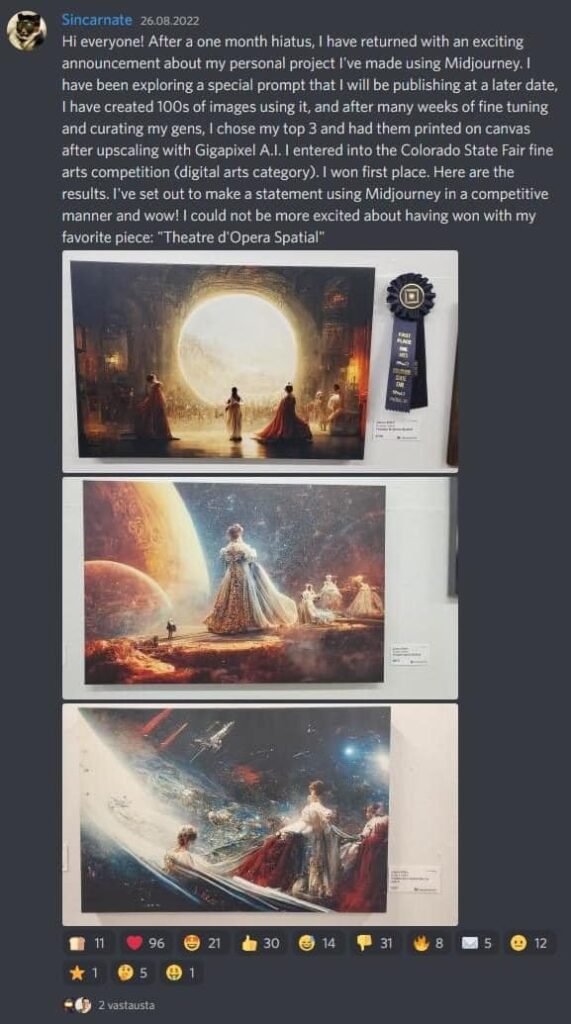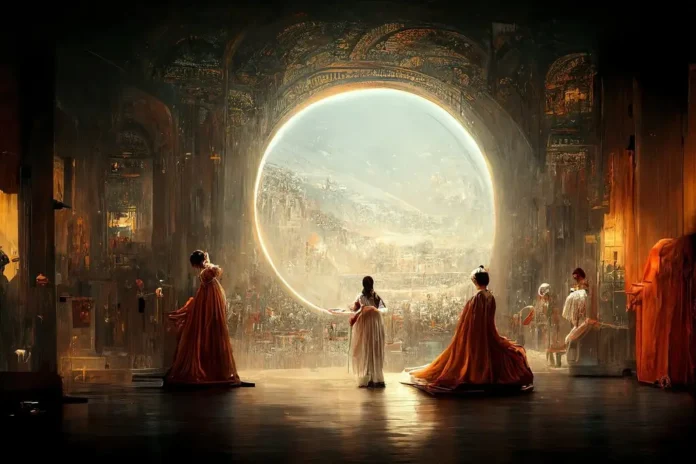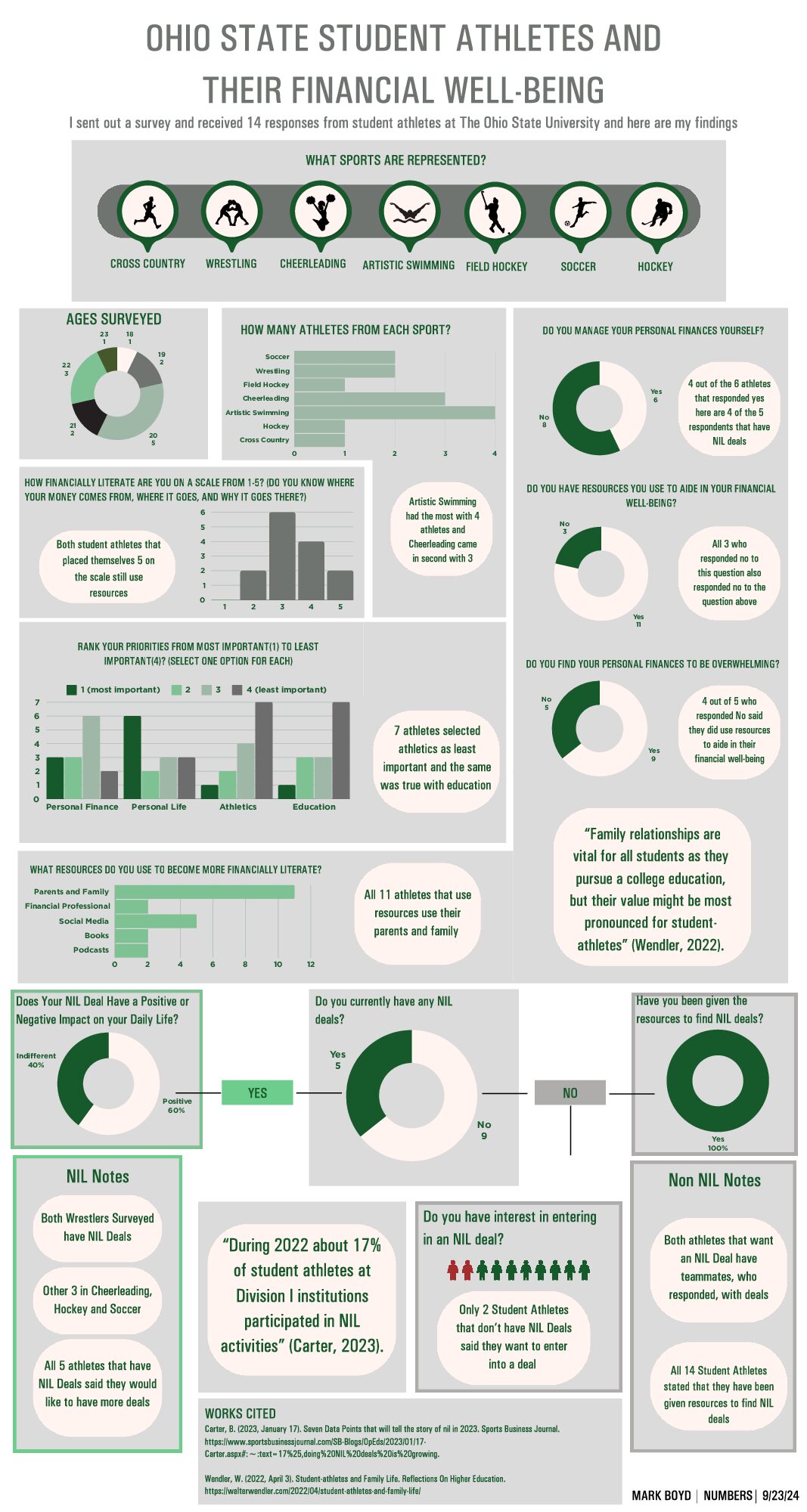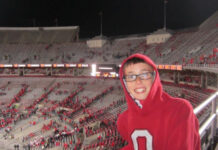This year, the Colorado State Fair’s annual art competition gave out prizes in all the usual categories: painting, quilting, sculpture.
But one entrant, Jason M. Allen of Pueblo West, Colo., didn’t make his entry with a brush or a lump of clay. He created it with Midjourney, an artificial intelligence program that turns lines of text into hyper-realistic graphics.
Mr. Allen’s work, “Théâtre D’opéra Spatial,” took home the blue ribbon in the fair’s contest for emerging digital artists — making it one of the first A.I.-generated pieces to win such a prize, and setting off a fierce backlash from artists who accused him of, essentially, cheating.
A.I.-generated art has been around for years. But tools released this year — with names like DALL-E 2, Midjourney and Stable Diffusion — have made it possible for rank amateurs to create complex, abstract or photorealistic works simply by typing a few words into a text box.
Mr. Allen got the idea to submit one of his Midjourney creations to the Colorado State Fair, which had a division for “digital art/digitally manipulated photography.” He had a local shop print the image on canvas and submitted it to the judges.
After his win, Mr. Allen posted a photo of his prize work to the Midjourney Discord chat. It made its way to Twitter, where it sparked a furious backlash.

“We’re watching the death of artistry unfold right before our eyes,” one Twitter user wrote.
“This is so gross,” another wrote. “I can see how A.I. art can be beneficial, but claiming you’re an artist by generating one? Absolutely not.”
Some artists defended Mr. Allen, saying that using A.I. to create a piece was no different from using Photoshop or other digital image-manipulation tools, and that human creativity is still required to come up with the right prompts to generate an award-winning piece.
Olga Robak, a spokeswoman for the Colorado Department of Agriculture, which oversees the state fair, said Mr. Allen had adequately disclosed Midjourney’s involvement when submitting his piece. The two category judges did not know that Midjourney was an A.I. program, she said, but both subsequently told her that they would have awarded Mr. Allen the top prize even if they had.
What makes the new breed of A.I. tools different is not just that they’re capable of producing beautiful works of art with minimal effort. It’s how they work. Apps like DALL-E 2 and Midjourney are built by scraping millions of images from the open web, then teaching algorithms to recognize patterns and relationships in those images and generate new ones in the same style. That means that artists who upload their works to the internet may be unwittingly helping to train their algorithmic competitors.
“It shouldn’t be an indictment of the technology itself,” he said. “The ethics isn’t in the technology. It’s in the people.”
And he urged artists to overcome their objections to A.I., even if only as a coping strategy.
“This isn’t going to stop,” Mr. Allen said. “Art is dead, dude. It’s over. A.I. won. Humans lost.”
Reflexive Analysis
What makes art, art? Is it the skillful hand that creates it? Is it the message it conveys or the infinite interpretations it offers? Is it the process or the final result? These are the sorts of questions that have been tirelessly asked from art communities from around the world since forever.
Crowds of uninformed masses flocked to this A.I.-Generated award-winning piece to criticize it, snidely proclaiming it can’t be art. These sentiments echo the conservative and confused minds of the same critics who grilled Marcel Duchamp’s “Fountain,” the piece that first introduced the controversial readymade. Despite this piece often being attributed to the synthesis of an entire modernist art movement (Dadaism), it was bashed and berated, only resulting in it’s rise to ubiquity. These same closed-minded critics would go onto denounce Andy Warhol’s pop art, later defunding Andres Serrano’s career after he released his controversial “Immersion (Piss Christ),” and later still, destroy Barnett Newman’s “Who’s Afraid of Red, Yellow, and Blue III.” Many so-called “art lovers” are some of the most hateful detractors out there.
I agree with Mr. Allen in the way that he views his art as equally valid as other methods of art creation. I think his focus on the companies behind the A.I. generators instead of the individual artist is constructive and reasonable. It is shameful to see so many people attack a fellow artist simply because of a method he used was new and quick. They are distracted from the real moral issue at hand – the large companies feeding off the everyman’s work – and if they don’t realize in time, we may really have a problem on our hands.
An A.I.-Generated Picture Won an Art Prize. Artists Aren’t Happy.
Roose, Kevin. "An A.I.-Generated Picture Won an Art Prize. Artists Aren't Happy." The New York Times, New York Times Company, 2 Sept. 2022, www.nytimes.com/2022/09/02/technology/ai-artificial-intelligence-artists.html. Accessed 13 Sept. 2022.




